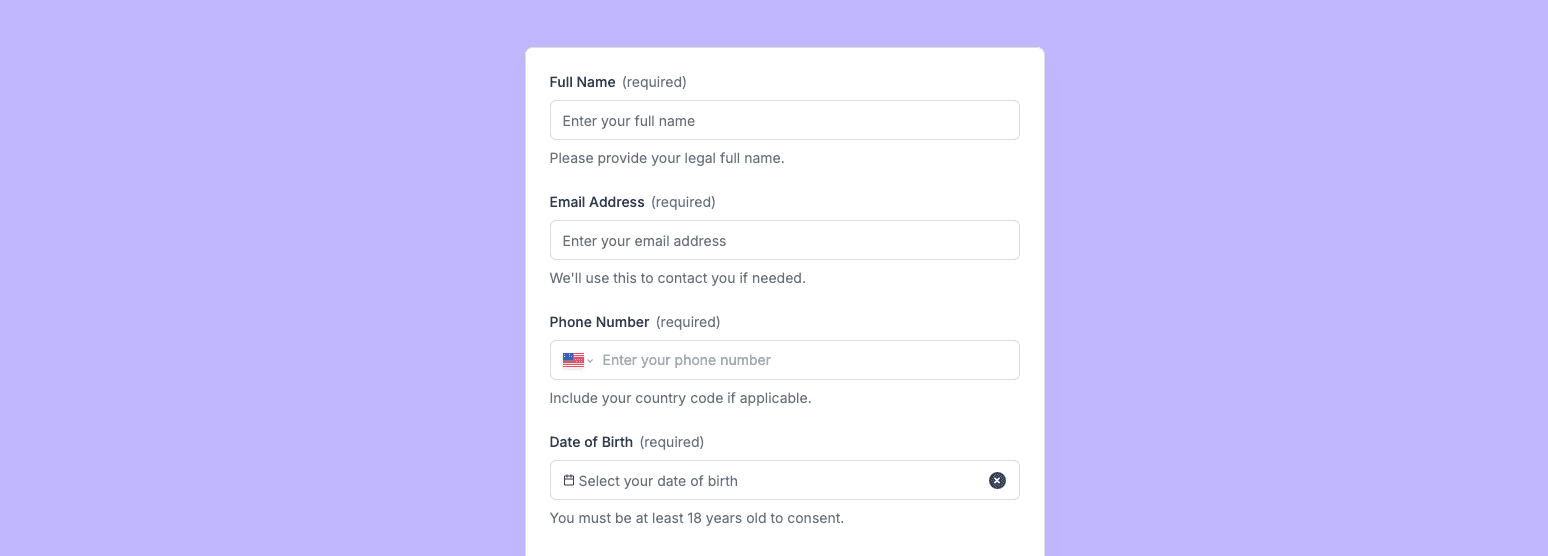
90 Day Evaluation FormInterfaces
Interfaces
Effortlessly Create and Manage Media Consent Forms for Seamless Permissions.

The Media Consent Form template, created with Zapier Interfaces Online Form Builder, is designed to streamline the process of obtaining permission for media usage. This form is particularly beneficial for organizations, schools, event planners, and content creators who frequently capture photos, videos, or audio recordings. By using this template, these entities can efficiently manage consent from individuals, ensuring that all media usage is authorized and documented.
User-Friendly Interface: The form is designed with simplicity in mind, making it easy for individuals to understand and complete. The intuitive layout ensures that users can quickly provide their consent without confusion.
Customizable Fields: Tailor the form to suit specific needs by adding or removing fields. Whether you need to capture additional information or simplify the form, customization options are readily available.
Automated Workflows: Integrate the form with other applications through Zapier’s automation capabilities. Automatically send completed forms to cloud storage, notify team members, or update databases, reducing manual tasks and enhancing efficiency.
Seamless Integration: Connect the Media Consent Form with a wide range of applications such as Google Drive, Dropbox, or CRM systems. This integration ensures that all consent forms are stored and organized systematically.
Time-Saving Automation: Automate repetitive tasks associated with media consent management. For instance, set up automatic reminders for individuals who have not yet submitted their consent, or trigger follow-up actions once consent is received.
Enhanced Collaboration: Share the form with team members or stakeholders easily. The collaborative features allow multiple users to access and manage the form, ensuring that everyone is on the same page.
Step 1: Customize the Form: Begin by adjusting the form fields to match your specific requirements. Add fields for personal information, specific media types, or any additional consent details needed.
Step 2: Integrate with Applications: Use Zapier’s integration capabilities to connect the form with your preferred applications. This step ensures that all data collected is automatically organized and accessible.
Step 3: Share the Form: Distribute the form to individuals from whom you need consent. This can be done via email, social media, or embedding the form on a website.
Step 4: Monitor and Manage Responses: Keep track of all submitted forms through Zapier’s dashboard. Use the data to manage media usage effectively and ensure compliance with organizational policies.
By leveraging the Media Consent Form template, organizations can simplify the consent process, enhance data management, and focus on creating impactful media content.
The responses are automatically collected and organized into a structured, user-friendly table format for efficient management and analysis. Here’s how the process works:
When a user submits a form, their responses are instantly captured and stored in a secure, cloud-based database. Each form field (e.g., name, email, or custom questions) is mapped to a corresponding column in the table, ensuring data is neatly organized. The table updates in real-time, allowing you to view and manage responses as soon as they are submitted.
Building on this functionality, you can leverage Zaps to configure email or Slack notifications, ensuring you receive instant alerts for new form submissions. Additionally, Zaps enable you to create sophisticated customization and integration workflows tailored to your specific needs.
Once customized, the form can be shared as a link. You can find this link in the top left corner of the Form Editor. Simply copy and send the link to anyone you want to share it with. This eliminates the need for printing or manual distribution, making the process quick and efficient.
Absolutely. One of the great advantages of using Interfaces is the ability to customize your forms. You can add, remove, or modify fields to suit your specific event planning needs. Just remember to update your Zap accordingly if you make significant changes to the form structure.